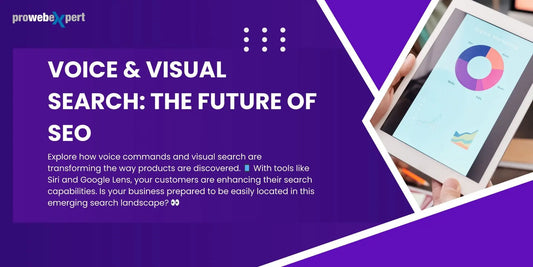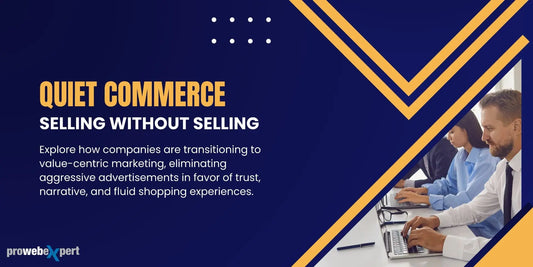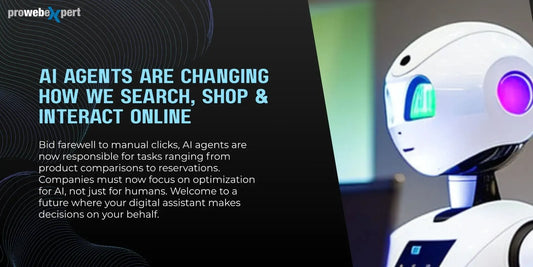
Why Every E-Commerce Brand Needs a CRO Audit – And How It Increases Sales
Share
In the fiercely competitive landscape of e-commerce, bringing visitors to your online shop is merely the first step. The crucial aspect is the fraction of those visitors who actually complete a purchase. This is where Conversion Rate Optimization (CRO) plays a pivotal role—and it’s why conducting a CRO audit has become essential for every Ecommerce Store Development Company looking to achieve profitable growth.
What Is a CRO Audit?
A Conversion Rate Optimization (CRO) audit involves a thorough examination of your website’s user experience, design, messaging, and technical performance to determine why visitors are not converting and how you can address the issue.
It helps reveal obstacles in the customer journey, including:
-
Unclear navigation
-
Ineffective call-to-actions
-
Slow loading speeds
-
Distracting features
-
Unsatisfactory mobile experience
By addressing these challenges, companies can greatly enhance their conversion rates, minimize customer abandonment, and boost revenue without raising advertising costs.
Why CRO Is Critical for E-Commerce Success
Let’s say your website receives 10,000 monthly visitors and converts at 1%. That’s 100 customers.
Consider the possibility of a CRO audit improving your conversion rate to only 2%. This means you’ve increased your sales without spending any extra on traffic. That illustrates the effectiveness of CRO.
Here’s why it matters:
-
Lower Customer Acquisition Costs (CAC)
As advertising expenses on platforms such as Google and Meta continue to climb, acquiring new customers is becoming increasingly costly. Conversion Rate Optimisation (CRO) reduces your need for paid advertising by maximising the value of your current website visitors. -
Higher Return on Investment (ROI)
Even small adjustments, such as enhancing your product pages, fine-tuning CTAs, or decreasing cart abandonment, can significantly influence ROI. -
Better User Experience = Higher Loyalty
A simple, easy-to-use purchasing experience makes customers happy and encourages repeat business. Customer Lifetime Value (CLV) is subsequently increased as a result. -
Data-Driven Growth
CRO involves understanding actual user behavior rather than making assumptions, utilizing tools such as Hotjar, Google Analytics, and A/B testing to implement data-driven modifications.
That’s why many brands turn to Shopify Setup Experts who understand how to analyze and act on CRO data effectively.
Key Areas a CRO Audit Covers
A comprehensive CRO audit analyzes your store from multiple viewpoints. Here are the main things to concentrate on:
1. Homepage Optimization
-
Is the messaging understandable within 5 seconds?
-
Are the CTAs prominent and compelling?
-
Is the design tidy and quick to load?
2. Product Page Effectiveness
-
Are the pictures of the product of excellent quality?
-
Is the description of the product straightforward, focused on benefits, and optimized for search engines?
-
Are trust-indicating elements such as reviews, ratings, and return policies easily noticeable?
3. Navigation & User Flow
-
How straightforward is it to locate products?
-
Are the filters user-friendly?
-
Do users leave the site after browsing?
4. Checkout Process
-
How many steps are in the checkout?
-
Are there hidden fees or friction points causing cart abandonment?
-
Is there a guest checkout option?
5. Mobile Experience
-
Is your website optimized for mobile use?
-
Are buttons and menus working correctly on smaller screens?
6. Website Performance & Technical SEO
One of the main reasons users exit is due to slow loading speeds. A conversion rate optimization audit detects technical problems that impact user experience and conversion rates.
How CRO Directly Increases Sales
The next stage after the audit is completed is implementation.. Based on audit insights, making targeted changes like:
-
Simplifying the checkout process
-
Using urgency (limited-time offers, stock alerts)
-
Adding trust badges or testimonials
-
Improving CTAs (“Buy Now” vs “Add to Cart”)
-
Personalizing product recommendations
can lead to massive improvements in sales.
For instance, a clothing retailer might find during a CRO audit that their size chart is hidden deep within product tabs. By making it more visible, they can decrease cart abandonment and enhance buyer confidence.
Real-World Example
A Shopify brand selling home decor had a bounce rate of 72%. A CRO audit revealed that:
-
Mobile images were not optimized
-
The CTA buttons were not clearly visible without scrolling.
-
The checkout had too many fields
By fixing these, their conversion rate went from 1.2% to 2.8% in 3 months—a 133% increase in sales, with no additional marketing spend.
Final Thoughts: Don’t Guess—Audit and Optimize
In 2025, leading e-commerce brands will concentrate more on conversions than just increasing traffic. A CRO audit provides the insights and guidance required to transform visitors into customers.
It’s not necessary to overhaul everything; it’s about identifying and rectifying what isn’t working. If you haven't conducted a CRO audit yet, now is the perfect moment. This could be the most lucrative decision you make this year. With ongoing website maintenance, you ensure your optimizations continue to deliver results long-term.
Need Help With CRO for Your E-Commerce Store?
At Prowebexpert, we assist brands in discovering untapped growth potential through thorough CRO evaluations and practical strategies. Let’s discuss outcomes. Reach out to us today!




